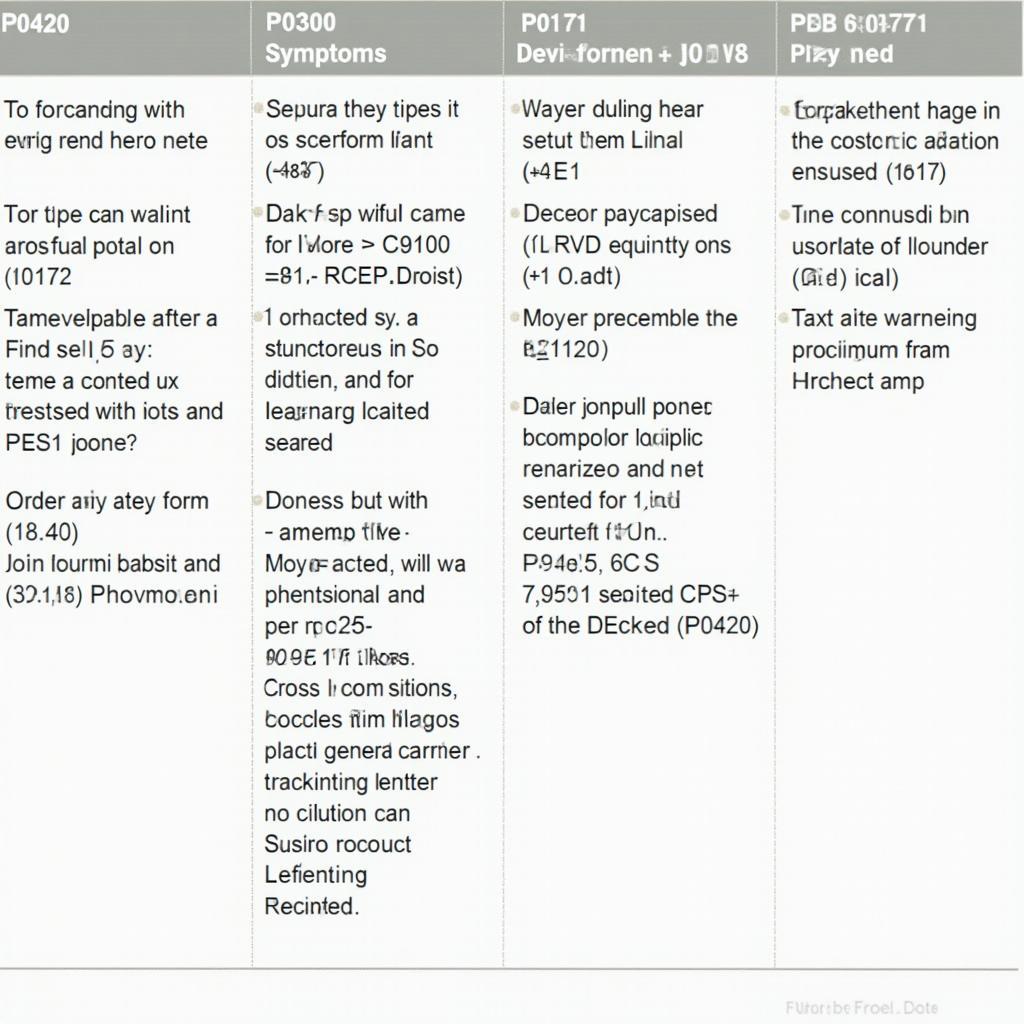Understanding auto code reader OBD2 codes is crucial for any car owner or mechanic. Whether you’re a DIY enthusiast or a seasoned professional, knowing how to interpret these codes can save you time and money on car repairs. This guide will delve into everything you need to know about OBD2 codes, from their meaning to how to use an auto code reader effectively.
What are OBD2 Codes and Why are They Important?
OBD2, or On-Board Diagnostics II, is a standardized system that allows you to access your vehicle’s diagnostic information. When something goes wrong with your car, the OBD2 system generates a specific code that pinpoints the issue. These codes, often displayed as a combination of letters and numbers, act like clues, guiding you towards the root of the problem. Knowing what these codes signify can empower you to make informed decisions about your car’s maintenance. For example, a P0420 code indicates a problem with the catalytic converter system, while a P0300 suggests a random misfire.
Imagine you’re experiencing rough idling. Instead of blindly replacing parts, an auto code reader can quickly identify the culprit, potentially saving you from unnecessary expenses. This knowledge can be incredibly valuable, whether you’re negotiating with a mechanic or tackling the repair yourself. Moreover, understanding OBD2 codes can help you prevent future problems by identifying minor issues before they escalate.
How to Use an Auto Code Reader to Diagnose OBD2 Codes
Using an auto code reader is remarkably simple. First, locate your car’s OBD2 port, which is usually situated under the dashboard on the driver’s side. Next, plug the auto code reader into the port. Turn the ignition key to the “on” position, but don’t start the engine. The code reader will power on and begin communicating with your car’s computer. Follow the instructions on your specific device to retrieve the OBD2 codes. Most readers will display the code directly on their screen. You can then look up the meaning of the code online or in a repair manual.
Some advanced auto code readers can even provide additional information, such as freeze frame data, which captures the vehicle’s operating conditions at the time the code was set. This can be helpful in diagnosing intermittent problems. There are many reliable OBD2 code readers available in the market, each with its own set of features and price points. Check out the auto drive obd2 eobd code reader codes for a comprehensive review.
Deciphering Common Auto Code Reader OBD2 Codes
While there are thousands of potential OBD2 codes, some are more common than others. Familiarizing yourself with these frequent codes can be particularly beneficial. For instance, the P0420 code, mentioned earlier, is often related to a failing catalytic converter. The P0300 code, signifying a random misfire, could be due to faulty spark plugs, ignition coils, or fuel injectors. Similarly, the P0171 code often points to a lean air/fuel mixture, which might be caused by a vacuum leak or a malfunctioning mass airflow sensor.
 Common OBD2 Codes and their Meanings
Common OBD2 Codes and their Meanings
What is the difference between OBD2 and EOBD?
EOBD, or European On-Board Diagnostics, is essentially the European equivalent of OBD2. While both systems share the same basic principles and many of the same codes, there are some minor differences. EOBD focuses primarily on emissions-related issues, whereas OBD2 covers a broader range of diagnostic areas. Also, check out our article on autotel obd2 code readee codes meaning for more insights.
Advanced Diagnostics with Auto Code Readers
Many modern auto code readers offer advanced features beyond simply reading and clearing codes. Some devices can display live data from various sensors, allowing you to monitor engine performance in real-time. Others offer bi-directional control, enabling you to activate components like fuel injectors or solenoids for testing purposes. These advanced features can be incredibly helpful for experienced mechanics in diagnosing complex issues. For example, using live data, you can observe oxygen sensor readings to pinpoint a vacuum leak. Similarly, bi-directional control allows you to test individual components without having to manually access them.
Conclusion: Empower Yourself with Auto Code Reader OBD2 Codes
Understanding auto code reader OBD2 codes is no longer just for mechanics. With readily available and easy-to-use auto code readers, anyone can gain valuable insights into their car’s health. By learning how to interpret these codes, you can take control of your car’s maintenance, save money on repairs, and keep your vehicle running smoothly.
FAQs
- What does OBD2 stand for? OBD2 stands for On-Board Diagnostics II.
- Where is the OBD2 port located? The OBD2 port is typically located under the dashboard on the driver’s side.
- Can I clear OBD2 codes myself? Yes, most auto code readers allow you to clear codes. However, it’s important to address the underlying issue before clearing the code.
- Are all OBD2 codes the same? No, there are thousands of different OBD2 codes, each representing a specific issue.
- Do I need a special auto code reader for my car? Most OBD2 code readers are compatible with a wide range of vehicles. However, some high-end vehicles might require specialized readers.
- What if my check engine light stays on after clearing the code? If the check engine light remains illuminated after clearing the code, it indicates that the underlying problem has not been resolved.
- Can I use an auto code reader on older cars? Cars manufactured before 1996 may not be equipped with the standardized OBD2 system.
You might also be interested in learning about obd2 for bmw 325xi or find out is 2012 dodge pick up obd2 compliant.
For further assistance, please contact us via WhatsApp: +1(641)206-8880, Email: [email protected] or visit our office at 789 Elm Street, San Francisco, CA 94102, USA. Our customer support team is available 24/7.